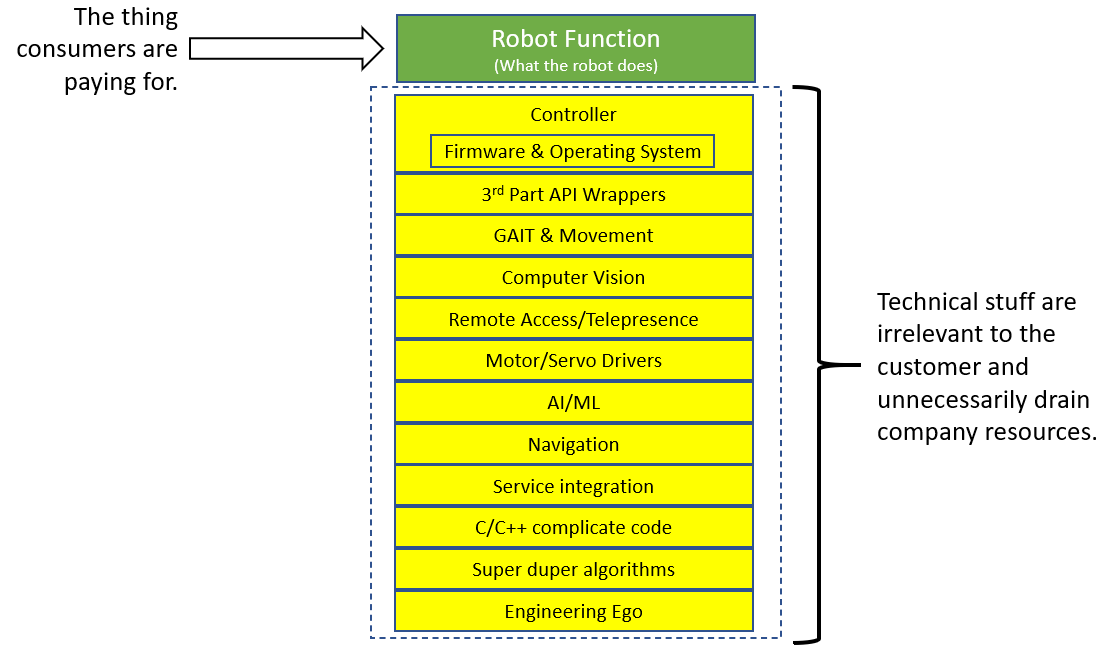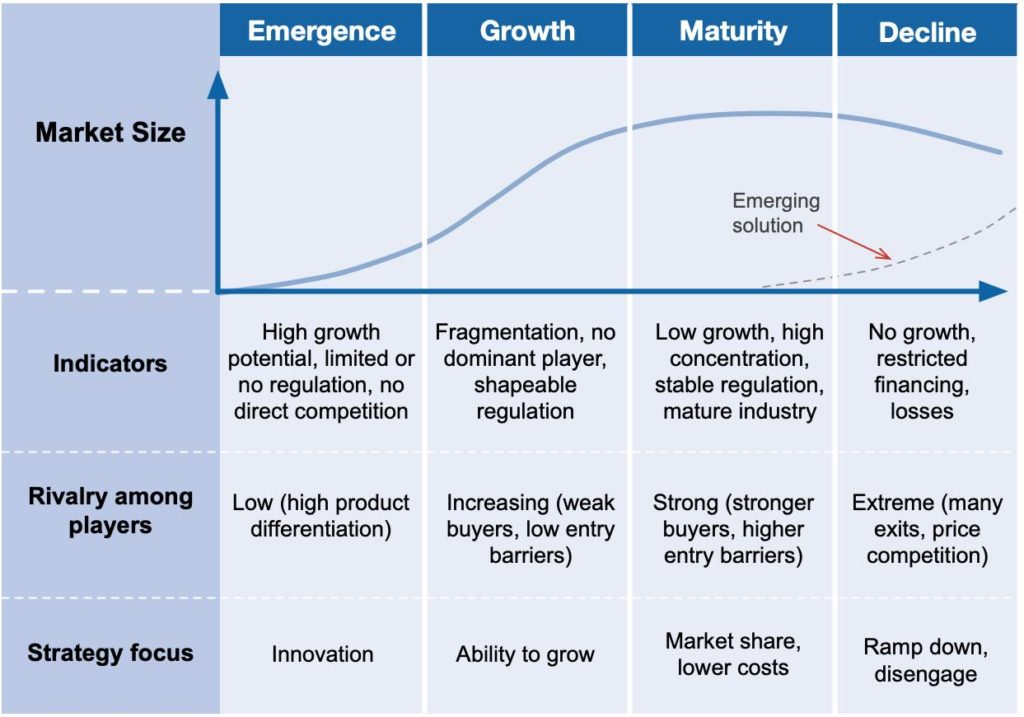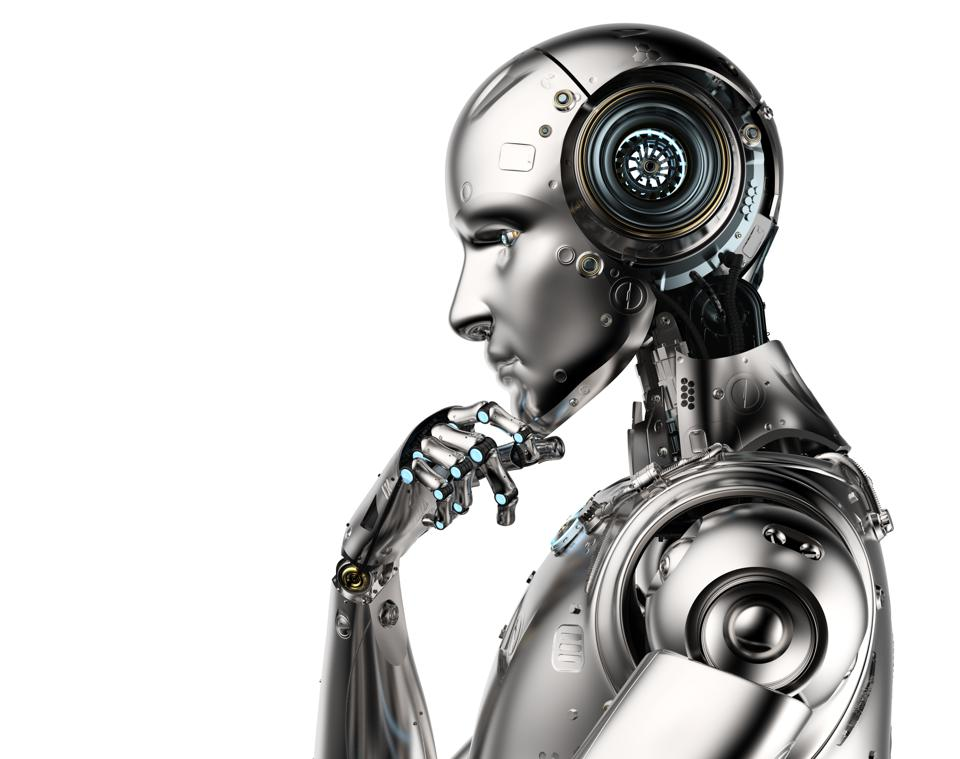
RIP: Anki, Jibo, Baxter, Mayfield, etc...
History foretells the fate of robot companies that attempt the burden of building and sustaining "the full-stack." Similar outcomes have affected companies from all industries where the founding partners were engineers. Today, we begin to ponder the question of where are the robots? Most importantly, why have so many robot companies failed, and what can we do to help robot companies succeed?

Perhaps the noise from social media, politics, and the current Covid-19 situation has caused startups and the investment community to forget a vital part of the industry life cycle stages. Organizations might have also overlooked this because it has also been several years since a new industry has emerged. Even the last few personal-computer sub-industries of mobile devices/apps, VR/AR, etc., have inherited sectors from existing mature and proven industries.

Robotics is a unique industry, albeit not too different from the personal-computer evolution, where multiple disciplines united to form a consumer product. The Personal Computer took many decades to influence and support sub-industries of software, hardware peripherals, and a wide range of use cases. Today, a computing device is user-friendly and esthetically pleasing, and the complex engineering disciplines are well hidden (CPU, operating system, drivers, power management, etc.). Readers may recall early personal-computer diagrams that included input, output, processing, and storage devices. Even earlier than the 1980's personal-computer, a computer consisted of even more complicated engineering disciplines that seemed impossible to scale to what we have today. Today, a computing device is common-place, and the components that make up computing devices are not taught in school as they once were.
The Revolution of Robot Platforms
Today, a child can operate a computing device before knowing how to speak. This results from a mature industry in which every contributor plays their strength by focusing on what they do best when contributing to product development. For example, some profitable companies make integrated circuits with a single function of performing mathematical floating-point calculations incredibly fast; because that is their strength. Another company will manufacturer a button or connector because that is their strength. Again, another produces batteries because it is their strength. The distribution of these disciplines in computing is how organizations can build platforms like Unity, Android, and Wix. Creative entrepreneurs use these platforms to make products that seamlessly integrate with our lives as tools and entertainment. What will it take for the robotics industry to distribute disciplines across specialists and enable creative entrepreneurs to make robot products rather than engineers? Imagine the impact that robot products made by creative entrepreneurs would have on our lives!
So, Where Is My Robot?
 This is the first blog entry in a series titled "Where Is My Robot?". We will cover the robot industry failures, strengths, and areas of improvement needed to fulfill consumer and financial potential. We will reflect on the fallen venture-backed giants that attempted to skip the industry life-cycle steps, such as Baxter, Anki, Jibo, Mayfield, Romo, and many others.
This is the first blog entry in a series titled "Where Is My Robot?". We will cover the robot industry failures, strengths, and areas of improvement needed to fulfill consumer and financial potential. We will reflect on the fallen venture-backed giants that attempted to skip the industry life-cycle steps, such as Baxter, Anki, Jibo, Mayfield, Romo, and many others.
We will examine organizations that repeat Synthiam's message that "too many robot companies focus on the robot and not the business"; however, these same organizations build complex solutions targeted at engineers instead of creative entrepreneurs. In this article by TechCrunch, hardware manufacturers use Synthiam's message that "making robots should be easy" while contrarily designing products targeted at engineers.
In this "Where Is My Robot?" series, other subjects we will discuss are operating system choices that support rapid prototyping for creative entrepreneurs. Most importantly, how using Linux for r&d increases the barrier of entry, adds unneeded operational complexities, and limits productive creativity.
Provide feedback in the comments of topics in this area you would like to see covered. See you in the next blog entry - stay tuned!

Ya well I have always had the interest in robots and always hoped by this year 2021 we would have Flying cars and robots like C3P0 and R2D2 serving us with super A.I. and doing all the regular home tasks. Sadly life did not happen like that ideal Future. How many famous Actors and Billionaires were offered tickets to fly on a rocket ship, go to the moon or just orbit,never happened. No space Travel No starwars. I don't believe anything NASA does is true. Although I remember starting basic electronic projects at age 12 and building neat projects from those old Radio shack 100 experiment Lab kits. Then progressing to build Animatronic creations in the basement, The Grim Reaper that moved around with the old Clapper wired into "Color Organ" instead of a light bulb activated by sound,it moved motors on the Animatronic arms and head. ARC Synthiam has improved all these projects for kids wanting to learn how to control servos with Easy to use software,doing what I enjoyed doing as a kid with antique electronics. Still not much has really changed, I am still making weird creations in the basement,LOL! Driving a sports car from the 80's, listening to hippy rock from the 70's. Progress sure is slow ,where is my Flying car?xD
Edit----The coolest thing in Robotics would have to be The DJ Snow shoveling robot shown on the Synthiam web intro video clips, sometimes I will watch that for half hour,never ceases to amaze!
When I am at the farm, I am now always thinking about robots :-)
I see some amazing machines doing some amazing things... like this - Check this amazing video: https://youtu.be/BdqZG-UF324
Maybe one day we will see some "big" robots with Hydraulics and Hydrostatic parts if possible to accomplish some great tasks... Sounds scary when I think about it.
Hydraulic denoting, relating to, or operated by a liquid moving in a confined space under pressure.
Hydrostatic relating to or denoting the equilibrium of liquids and the pressure exerted by liquid at rest. "the hydrostatic pressure of the cell"
Pneumatics is what the biggest companies use now.Air pressure smaller compressors,valves air tubes of plastic,can be very strong too.For one job I got right after high school, took the University courses in Pneumatics/PcL or pLC computer programming of industrial Pneumatics robots.I had a job after stayed 8 years before they moved back to Michigan,they did not like our Union.Best job ever.Huge company ATS merged with German industrial robots.we made Wind shield wiper motors for all the major car makers around the world.I started as setup guy,later Lead hand in charge of night shift 10pm to 6AM. Had to make 3000 armature motors on my side of factory per shift.So many robot Arms on the assembly line ...eh Jer,LoL! It was mainly just jumping inside a robot cage that was stuck,clear the jammed part or use computer to adjust speed or axis.Mostly easy work,hardest part was staying awake! One monster robot had 8 arms like giant EZ hex 6 robot.Scairy as hell to go in that cage!
I just came across this article about Boston Dynamic's new direction. Big surprise here but it is not some complex walking quad. They are looking at industrial robots as we have pointed out here, that's where the money is at. They are moving away from robotics 2.0 and embracing the robotics 1.0 value proposition. https://techcrunch.com/2021/03/29/this-is-boston-dynamics-next-commercial-robot/
Great find, Perry. I think it's okay to assume that robots 2.0 has a place in small/medium business assembly/packaging/etc.. However, I do not think Boston Dynamics has ever consulted a business to understand their needs. Nor have they used creative staff for design/esthetics. I have very few positive things to say about Boston Dynamics. Loud, ugly, and impractical robots.
Also, i don't even think that robot photo is practical. Uh, so empty boxes i guess?
BD should have tried to sell themselves to Tesla versus Hyundai. I can just hear Elon now. (2021) "We will have fully autonomous mobile robots within 12 months"... 12 months later (2022) "All our robots have all the hardware necessary on board to be fully autonomous all you need is the software..." 12 months later (2023) "All Robots are fully autonomous ready we are just waiting on regulators..." 12 months later (2024) "All Robots are Tesla Robo Worker ready, you would be a fool to buy any other robot" 12 months later (2025) "We are entering beta soon for our fully autonomous robots we said we would give you in 2021" News Headlines (2026) Autonomous Robot rampages through football stadium ....
HAHAHAHA @Nink
I remember his presentation in 2016 "Tesla cars will be fully autonomous and drive ride-sharing while you're at home watching tv": https://siliconangle.com/2016/10/20/tesla-to-launch-ridesharing-program-bans-self-driving-car-owners-from-uber-lyft/
I remember it well because I stood amongst my friends one day and explained how the world is changing and even Tesla is only months away from it - because their CEO said so.... I was far more naive then and thought to be a CEO you had to be truthful. I didn't realize you could "play the media" and say whatever is necessary to manipulate the stock market.
BD funding for years was from DARPA. None of these robots were meant to be anywhere but on a battlefield. So the designs are geared toward carrying equipment and eventually I'm sure weaponized. After years and years of development, they were acquired by Google. But how do you take years of military development designs and suddenly make it for robot delivery....well you don't and I think their next bosses Softbank, figured out that there would not be a market for their existing robots in a consumer setting (remember spot unloading the dishwasher with its head/gripper?). Now owned by Hyundai, it's back to at least B to B in an industrial setting, where the market is.